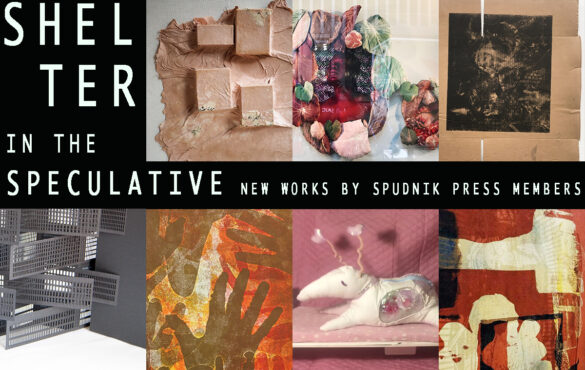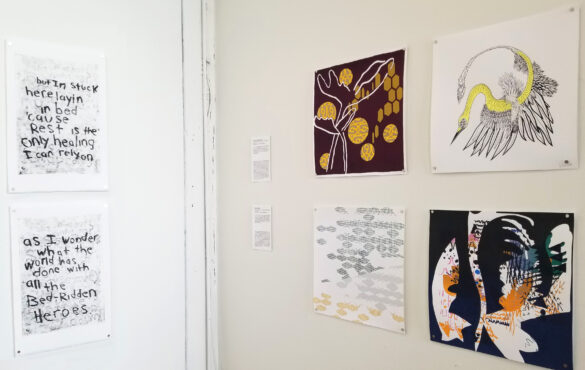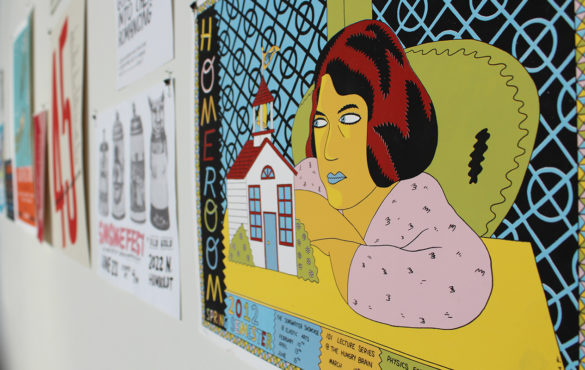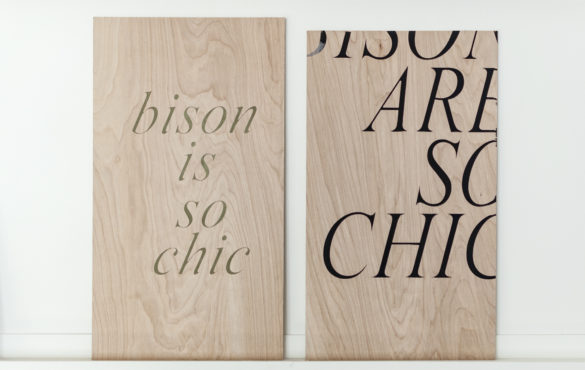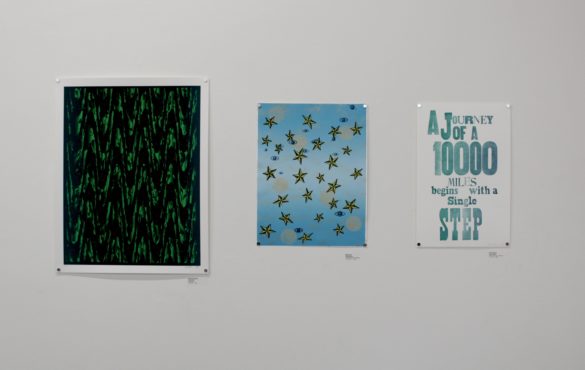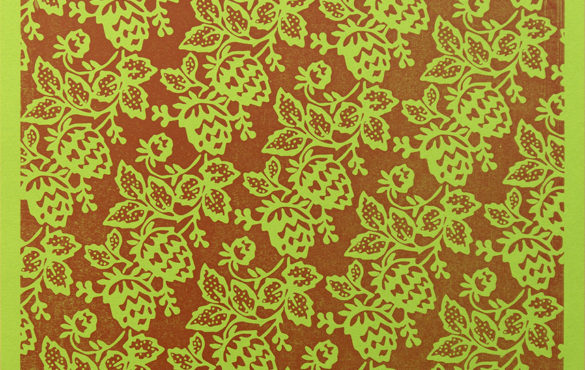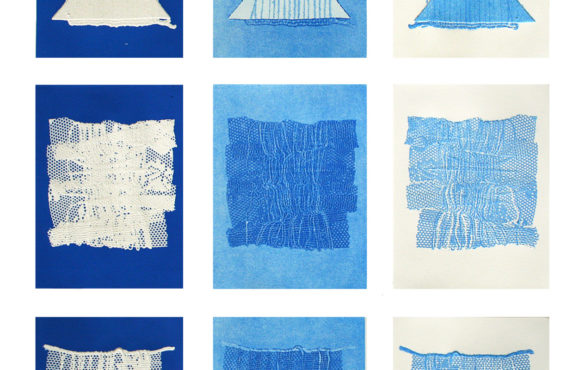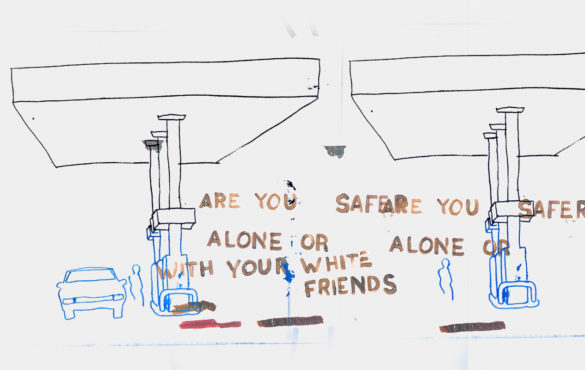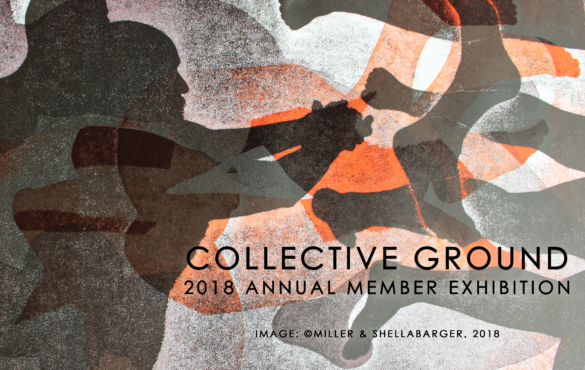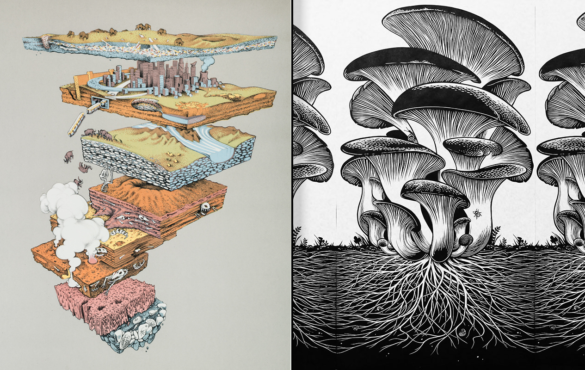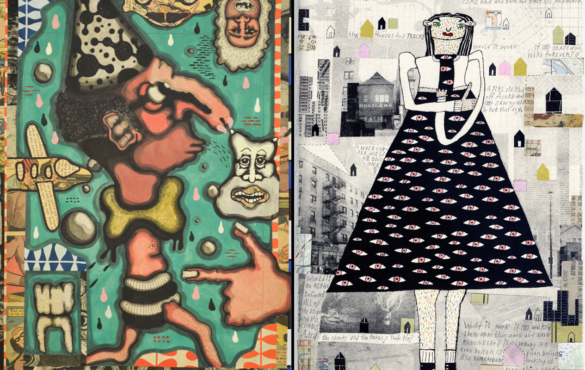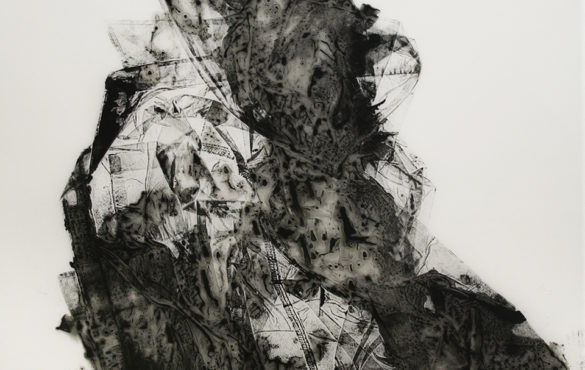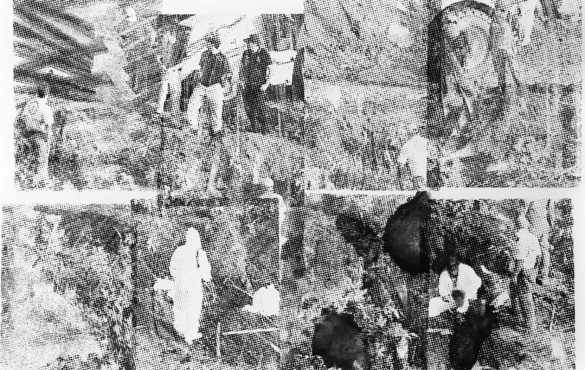Featured Artists:
Teresita Carson Valdez, Sam Hensley, Miller & Shellabarger, Yasaman Moussavi, Kianni Pleasant-Bey, Joshi Radin, Don Widmer
Juror:
Dates:
11/9/2020 – 1/9/2021
Location:
Spudnik Press Cooperative (Annex)
Events
Shelter in the Speculative | Virtual Reception & Artists Talk
Monday, November 30
7:00 – 8:30 p.m.
Zoom Meeting ID: 966 4803 1564
Shelter in the Speculative | Gallery Hours
Most Mondays 2:00 – 6:00 p.m.
Most Thursdays 2:00 – 7:00 p.m.
Most Fridays 10:00 a.m. – 6:00 p.m.
Sunday, December 12, 1:00 – 3:00 p.m. with Don Widmer
Most Saturdays, 10:00 a.m. – 2:00 p.m. with Sam Hensley
Press Release:
For the 2020 Member Exhibition, Juror Ruby T has selected artworks that have a powerful physical presence: works that feel like a form of shelter, or are an extension or impression of the artist’s own body. During the pandemic, and mass movements for revolution, this exhibition asks: What kinds of physical and relational structures will we need, or need to build, in order to survive? How will the warmth and softness of our bodies guide us?
In Audre Lorde’s 1978 essay “Uses of the Erotic: The Erotic As Power,” she defines the erotic as “…a measure between the beginnings of our sense of self and the chaos of our strongest feelings. It is an internal sense of satisfaction to which, once we have experienced it, we know we can aspire.” She goes on to write: “In touch with the erotic, I become less willing to accept powerlessness, or those other supplied states of being which are not native to me, such as resignation, despair, self-effacement, depression, self-denial.”
Kianni Pleasant-Bey includes excerpts from Lorde’s essay in Fever Dream, a soft altar space rooted in protecting and nurturing Black femmes/womxn and all that they embody. Sometimes prayerful, sometimes geometric, sometimes grim, all of the works in this exhibition show reverence for the power of the erotic and the sensual to help us navigate pleasure, illness, rest, memorial, and violence.
Like a body, an artwork experiences and projects a physical life as it moves through the world. Experiencing art in this time of pandemic, we can more closely approach an artist’s work than we can the artist. With their rich textures and tactile materials, the works in this exhibition are further activated by proximity.
Yasaman Moussavi’s Revelation paper pulp sculpture references the traditional central courtyard of Persian domestic architecture as a site of spatial and social interactions, along with family correspondence as a means of emotional and social exchange between family members in and far away from home.
Teresita Carson Valdez’s work draws inspiration from translation as world building, the histories of cloth, the palimpsest, the creation of new traditions and archeological imagery as markers of temporality. Her screen-printed and dyed cloth sculpture, A novena for the plague, feels like a sacred object for private prayer, made public via the extreme circumstances of the pandemic, undergirded by the movement of bodies through global trade and displacement.
Even when viewed remotely, these works still insist on an awareness of our own spatial relationship to the artists’ bodies and internal worlds, via the stand-in, or symbolic object of the work. Miller & Shellabarger‘s Untitled pressure prints show layers upon layers of hands, giving the impression of being reached toward, or beckoned. The process for creating these images relies on physical pressure or force to create this bodily imprint, underscoring the labor and rhythm of human relationships— a theme at the heart of this collaboration between the married artists. Their gestures shift between moments of togetherness and separation, private and public, protection and pain, and visibility and invisibility.
Don Widmer’s Darkness and Light, an artist flag book, presents quotes by Etty Hillesum, a Dutch mystic and writer, who documented her life during the German occupation of Amsterdam and her experiences at Westerbork concentration camp. The harsh, stacked geometry of the black book evokes a prison cell block, rooting our current crises of incarceration and fascism in the historical.
Joshi Radin’s CardboardRecord006_1, made from found packing materials and used clothing in infant proportions, feels like an ultrasound from outer space after the aliens got their hands on our cardboard waste. The print records the marking of an absent body, as both a unit and a package, on a horizontal plane.
Sam Hensley’s Little Like Yourself presents an animatronic sculpture of a mythical creature resting atop a miniature bed, its breathing slow and belabored. This piece evokes reclaimed experiences of chronic illness and disability, in which rest may be proudly claimed and celebrated. Beds become more than of convalescence, but also soft zones of pleasure and even performance—bed as stage, stage as shelter, shelter as communion between bodies near and far.
This exhibition’s optimism comes from its insistence on human touch, physical care and pleasure, and the act of sheltering each other, as if to say: “Even during apocalypse, even when we must rebuild everything, we will still have our bodies and each other’s bodies.”
Image Credit, clockwise from top left:
- Yasaman Moussavi, Revelation 2, 2019, handmade paper and screenprint (detail)
- Kianni Pleasant-Bey, Fever Dream, 2019, mixed media (detail)
- Joshi Radin, Cardboard Record 006, 2020, monotype (detail)
- Teresita Carson Valdez, A Novena for the Plague, 2019, screenprint, silk, dye discharge (detail)
- Sam Hensley, Little Like Yourself, 2019, animatronic sculpture and zine (detail)
- Miller & Shellebarger, Untitled 2, 2019, pressure print
- Don Widmer, Darkness and Light: Words of Etty Hillesum, 2020, artist book (detail)
